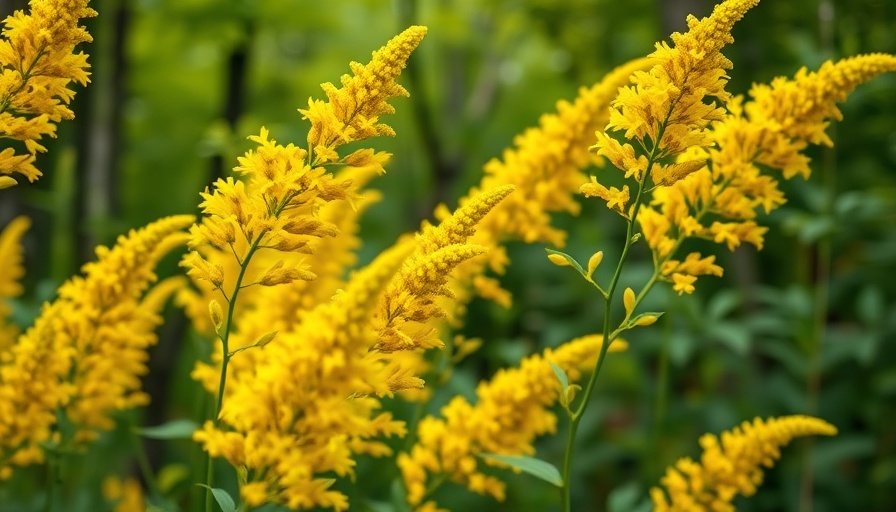
The Splendor and Versatility of Goldenrods
Goldenrods, the beloved late-season wildflowers, are not only a marvel to behold with their striking sprays of golden blooms, but they also serve as crucial food sources for birds, bees, and other pollinators. With a vast array of over 120 different species, it’s no wonder that goldenrods can thrive in a variety of growing conditions, whether in sun-kissed meadows or shaded garden nooks.
Choosing the Right Goldenrod for Your Landscape
If you’re looking to introduce some goldenrods into your landscape, understanding the unique characteristics of each species is essential. In this guide, we will explore nine different types of goldenrods, detailing their specific sun, soil, and water requirements, alongside their growth habits, flower structures, foliage types, blooming periods, and the USDA hardiness zones they thrive within. Equipped with this knowledge, you can confidently pick one or perhaps two goldenrods that will flourish in your garden.
The Fascinating Types of Goldenrods
We begin our exploration with the Blue-Stemmed Goldenrod (S. caesia), native to eastern North America. Known for its delicate arching inflorescences adorned with sulfur-yellow flowers, this species blooms from late summer through fall. Its blue or purple stems and clumping growth habit make it an excellent choice for compact gardens, particularly since it is non-invasive. Thriving in USDA Hardiness Zones 4-9, it not only requires good drainage but can adapt to a variety of light conditions from full sun to shade.
Next, the Canada Goldenrod offers a robust addition to your garden. Found across much of North America, this species boasts a range of uses. Canada goldenrod is believed to have low susceptibility to pests while attracting some beneficial insects, thereby promoting your garden's ecosystem. The deep golden flowers can create a vibrant backdrop when coupled with complimentary plants. This goldenrod also supports pollinators, making it a winner for gardeners looking to enhance biodiversity.
Colorful Companions in Flower Gardening
Goldenrods are not just visually stunning; they contribute vastly to a well-rounded garden ecosystem. By planting diverse species, from Gray Goldenrod to Showy Goldenrod, you create habitats for beneficial insects and birds. Integrating these natural allies into your garden can also minimize pest problems without reliance on chemical pesticides—an essential aspect of climate-friendly gardening.
Creating a Thriving Pollinator Garden
To truly maximize the benefits of these beautiful plants, consider creating a pollinator-friendly garden. This can include interplanting various species, such as Ohio Goldenrod and Prairie Goldenrod, along with a variety of flowering plants that bloom at different times throughout the growing season. This ensures a continuous food source for pollinators and adds aesthetic beauty to your gardening space. Use companion planting techniques to enhance growth and repel common pests, giving you a thriving environment for both plants and pollinators.
Actionable Insights for Your Goldenrod Journey
As you venture into growing goldenrods, aim to select a few species that will diversify your garden's appeal while supporting the local ecosystem. Pay attention to the distinct growth conditions each species prefers, from moisture levels to sun exposure. Remember, goldenrods can thrive even in poorer soils, which may enable you to use them as a solution for areas in your landscape that struggle.
The joy of cultivating goldenrods goes beyond aesthetics; it connects you with nature in spectacular ways. So, plant with intention, nurture with care, and observe how your garden evolves into a sanctuary for pollinators.
Final Thoughts
Your journey into garden cultivation can be immensely rewarding as you learn the ropes of growing fragrant flowers and vibrant plants essential for pollination. Embrace the wonderful world of goldenrods, and allow their beauty and utility enrich your landscape. For further tips on growing these wildflowers and practical advice on developing a sustainable garden, consult our detailed guides on growing and preserving plants.
 Add Row
Add Row  Add
Add 




 Add Row
Add Row  Add
Add 

Write A Comment